Exhibited:
Staffordshire St Gallery, London. December. 2022.
![]()
![]()
![]()
![]()
![]()
![]()
![]()
Staffordshire St Gallery, London. December. 2022.
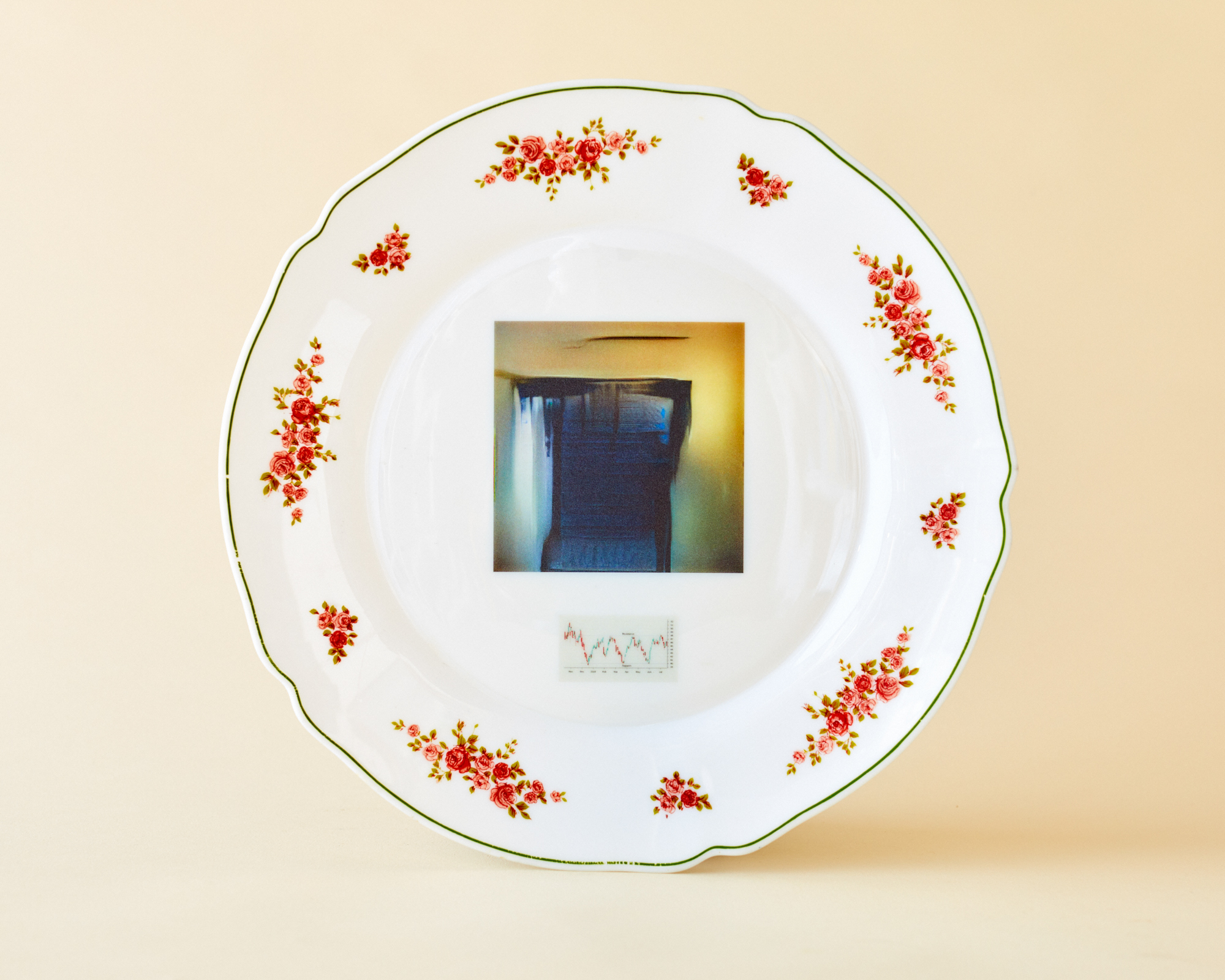
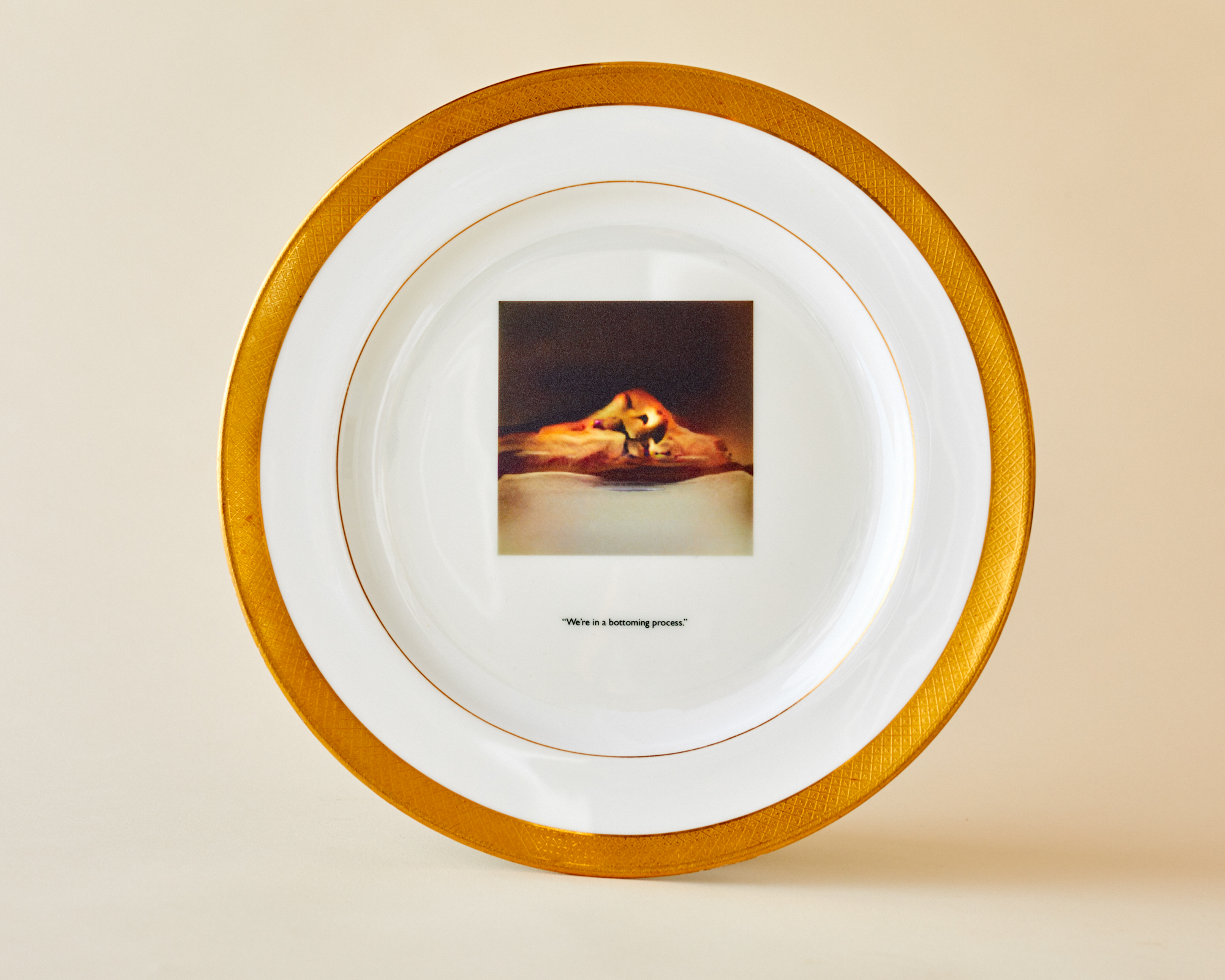



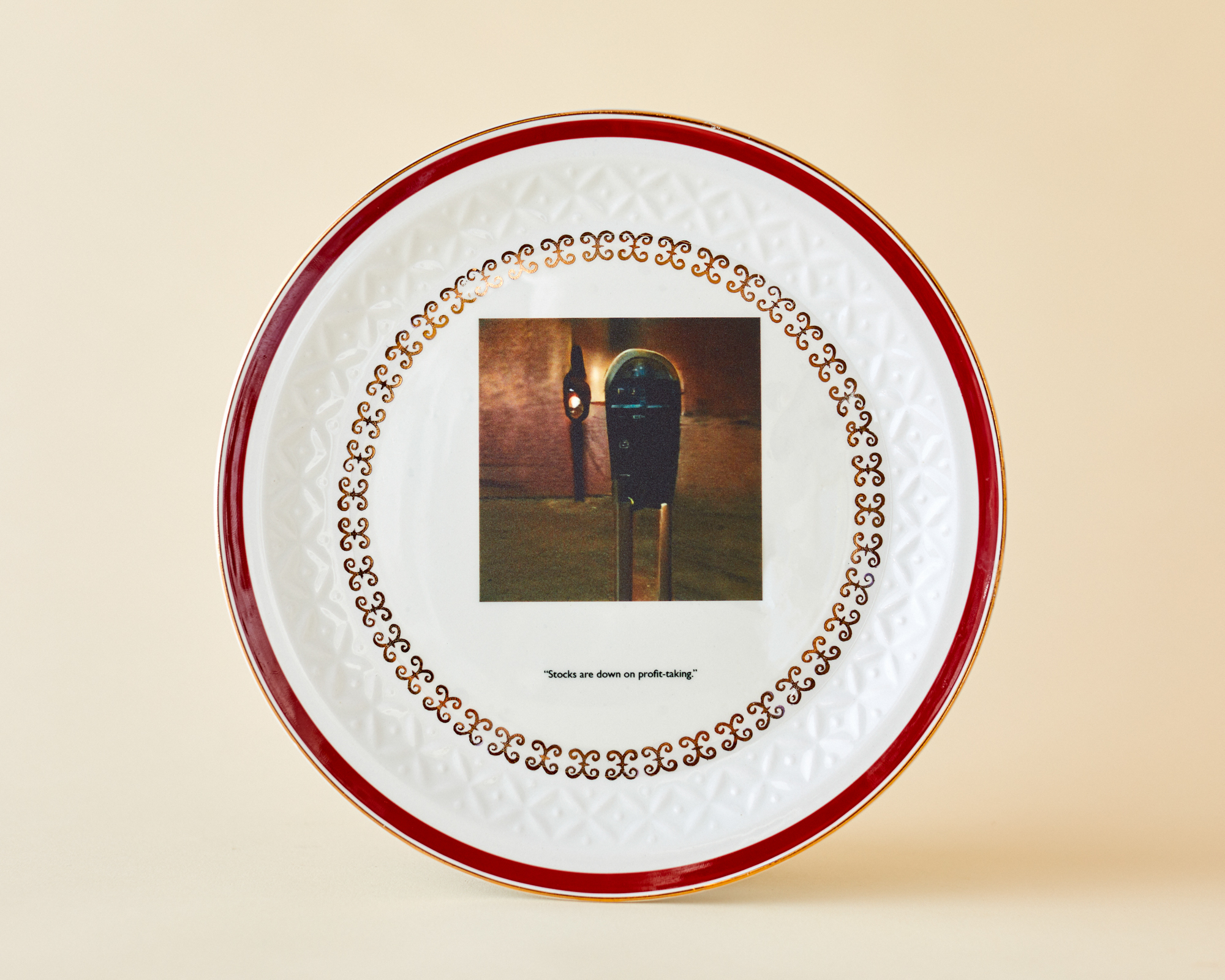

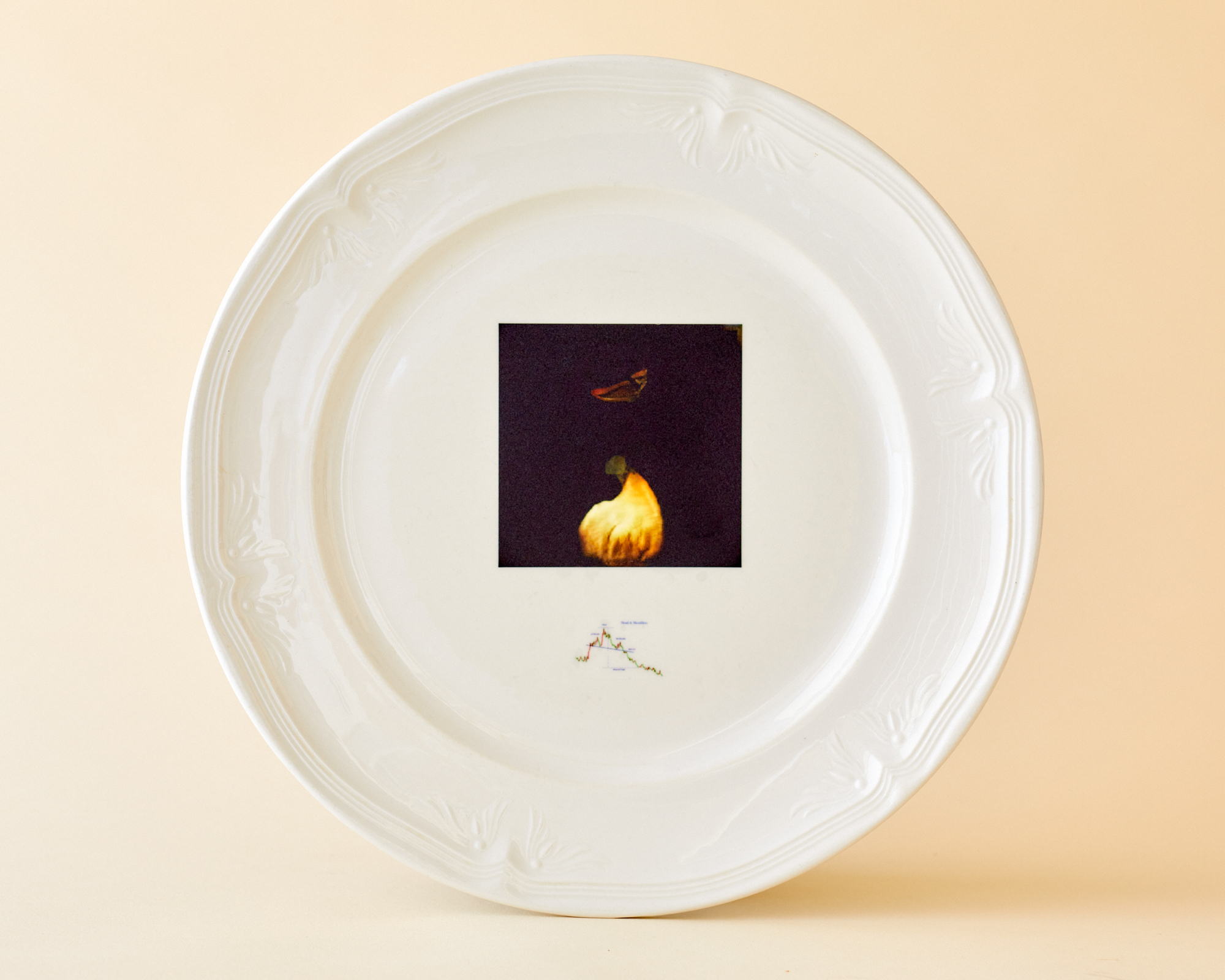




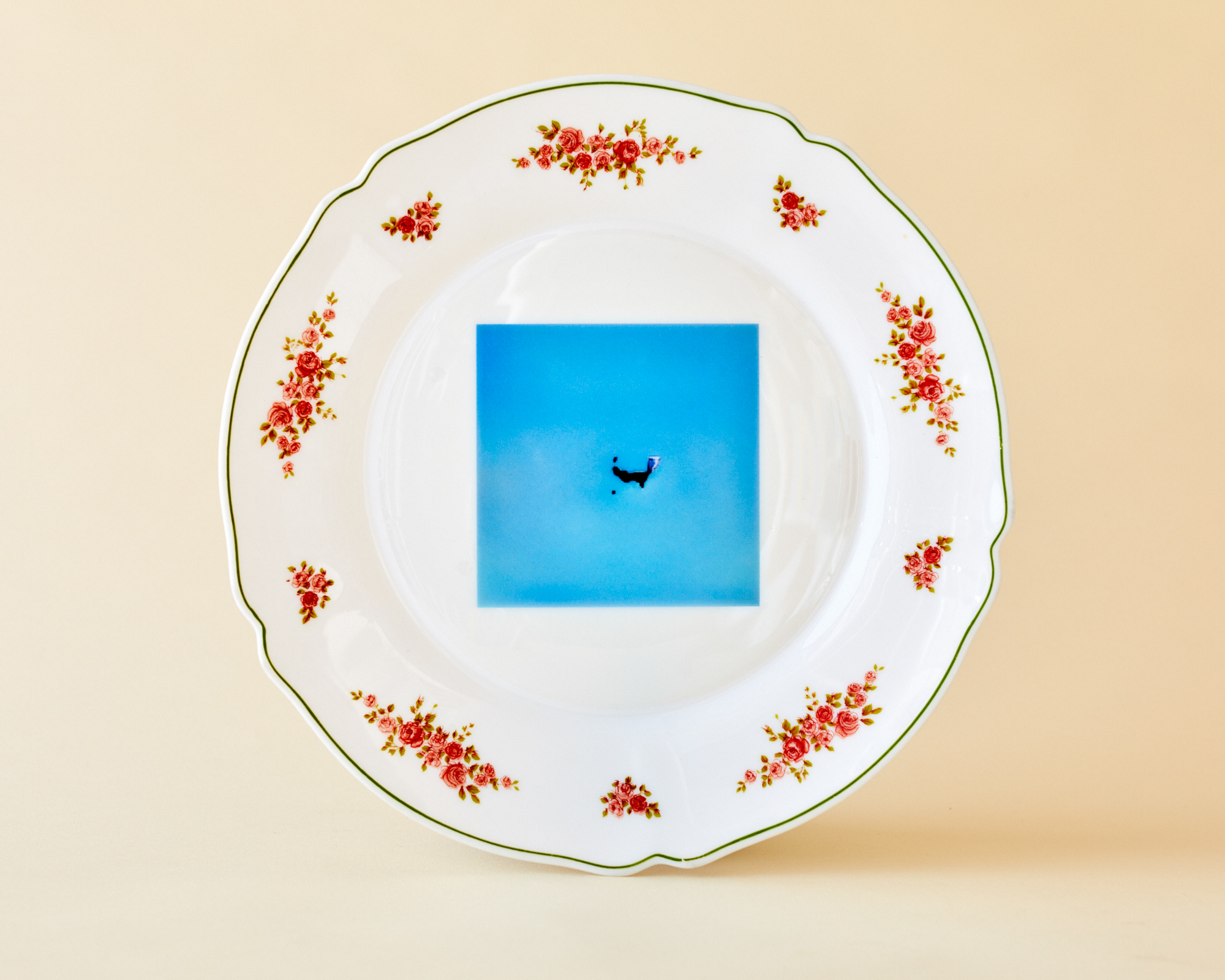
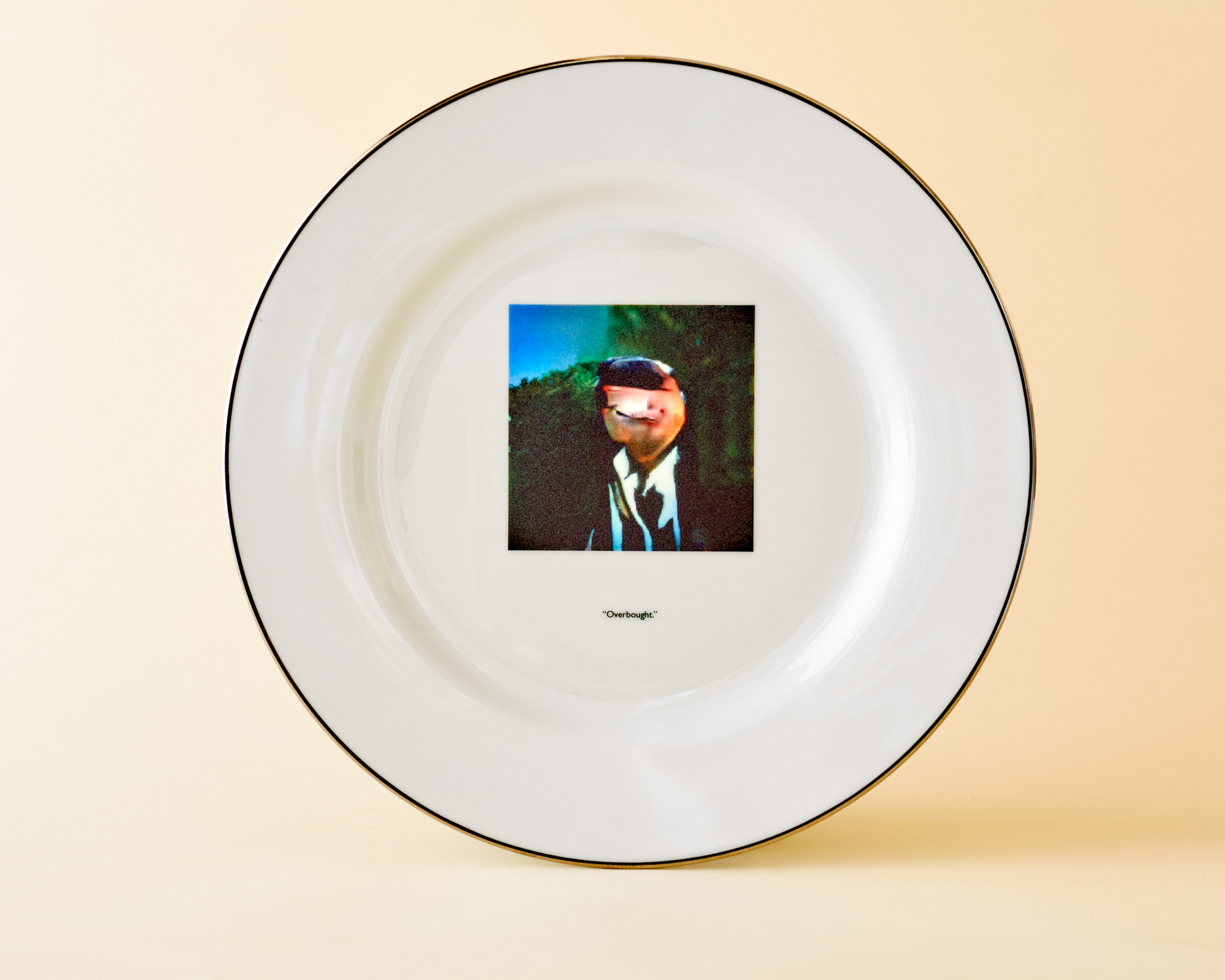
A Past That Never Existed
“The economic viability of
the present is sustained by debt, that is, by future income claimed, consumed,
or spent in the present…in short, the present feels as if it is constituted by
emptying out the future to sustain a looping version of a past that never
existed”. – Hito Steyerl.
This work - a collaboration between myself and Italian artist duo Eccoci Kitchen - uses food as a vehicle to explore and imagine alternative economies and value systems. Part installation, part workshop: four courses are served which allow visitors to eat, explore and talk about food in relation to cultural, personal, nutritional and experiential value. Food is served on a set of algorithmically generated plates, which take phrases used by financial traders in order to predict future trends in the stock market as their starting point.
Does our economy rests on a set of fictions and fabrications? Can we imagine alternative value systems other than financial ones? Are there other principles or standards of behaviour that we consider important for life?
Participants are encouraged to explore these questions through a series of interactions. Starting with three things we value in our lives, and three morals or values that we admire in ourselves and others, participants are asked to imagine what an economy or society based on these objects, values and morals might look like. How might we measure an economy that is based on our sense of touch for example? What might an economy based on the sun look like? What shape would it take? Participants are encouraged to respond to the exercisers by writing and drawing on the tablecloth, serving as a document of communal ideas and outcomes from the workshop.
The work aims to defend the intrinsic value of knowledge and human exchange - a playful engagement with food and a space for us to come together, share perspectives and imagine our futures into existence.
![]()
![]()
![]()
![]()
![]()
![]()
![]()
![]()
![]()
![]()
![]()
![]()
![]()
![]()
![]()
![]()
![]()
![]()
A further note on the plates:
These images have been produced by a Generative adversarial network. (GANs) are algorithmic architectures that use two neural networks, (a generator and a discriminator) pitting one against the other in order to generate new, synthetic instances of data that can pass as real. They are used widely in image recognition, generation and are the algorithms used in the creation of “deep fakes”. I have created these images using a text-to-image GAN. Through this process, I am able to generate images from words.
I have been feeding this particular GAN the names of various stock-market patterns used by traders in order to predict future trends in the financial market, as well as phrases taken from various internet forums for day traders (amateur home traders) on how to become profitable on the stock market. The GAN then produces an image, which it thinks, accurately represents these words. The patterns and phrases are printed underneath each image, with an aim to create a satirical and fabricated visual encyclopaedia of trading techniques and patterns.
The images created are based on a database of images taken at random from the internet, from which the algorithm is trained. These images are therefore fabrications of reality, based on real images, that the algorithm is attempting to present as real.
There are some interesting parallels between the way that this algorithm works, and the way in which value is apportioned to stocks on the stock market – both involve a certain amount of fiction and fabrication, and have limited relation to tangible reality.
This work - a collaboration between myself and Italian artist duo Eccoci Kitchen - uses food as a vehicle to explore and imagine alternative economies and value systems. Part installation, part workshop: four courses are served which allow visitors to eat, explore and talk about food in relation to cultural, personal, nutritional and experiential value. Food is served on a set of algorithmically generated plates, which take phrases used by financial traders in order to predict future trends in the stock market as their starting point.
Does our economy rests on a set of fictions and fabrications? Can we imagine alternative value systems other than financial ones? Are there other principles or standards of behaviour that we consider important for life?
Participants are encouraged to explore these questions through a series of interactions. Starting with three things we value in our lives, and three morals or values that we admire in ourselves and others, participants are asked to imagine what an economy or society based on these objects, values and morals might look like. How might we measure an economy that is based on our sense of touch for example? What might an economy based on the sun look like? What shape would it take? Participants are encouraged to respond to the exercisers by writing and drawing on the tablecloth, serving as a document of communal ideas and outcomes from the workshop.
The work aims to defend the intrinsic value of knowledge and human exchange - a playful engagement with food and a space for us to come together, share perspectives and imagine our futures into existence.

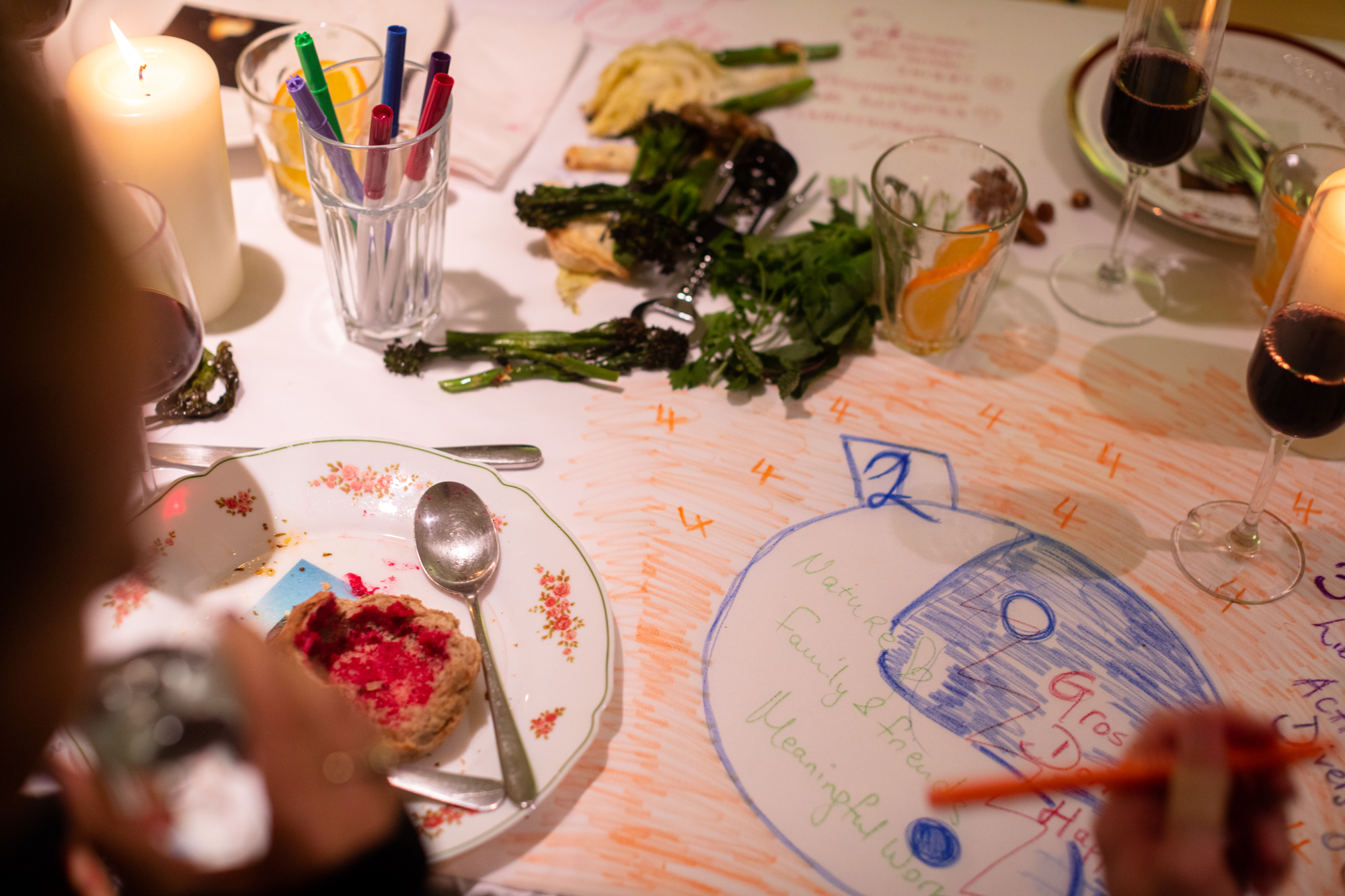
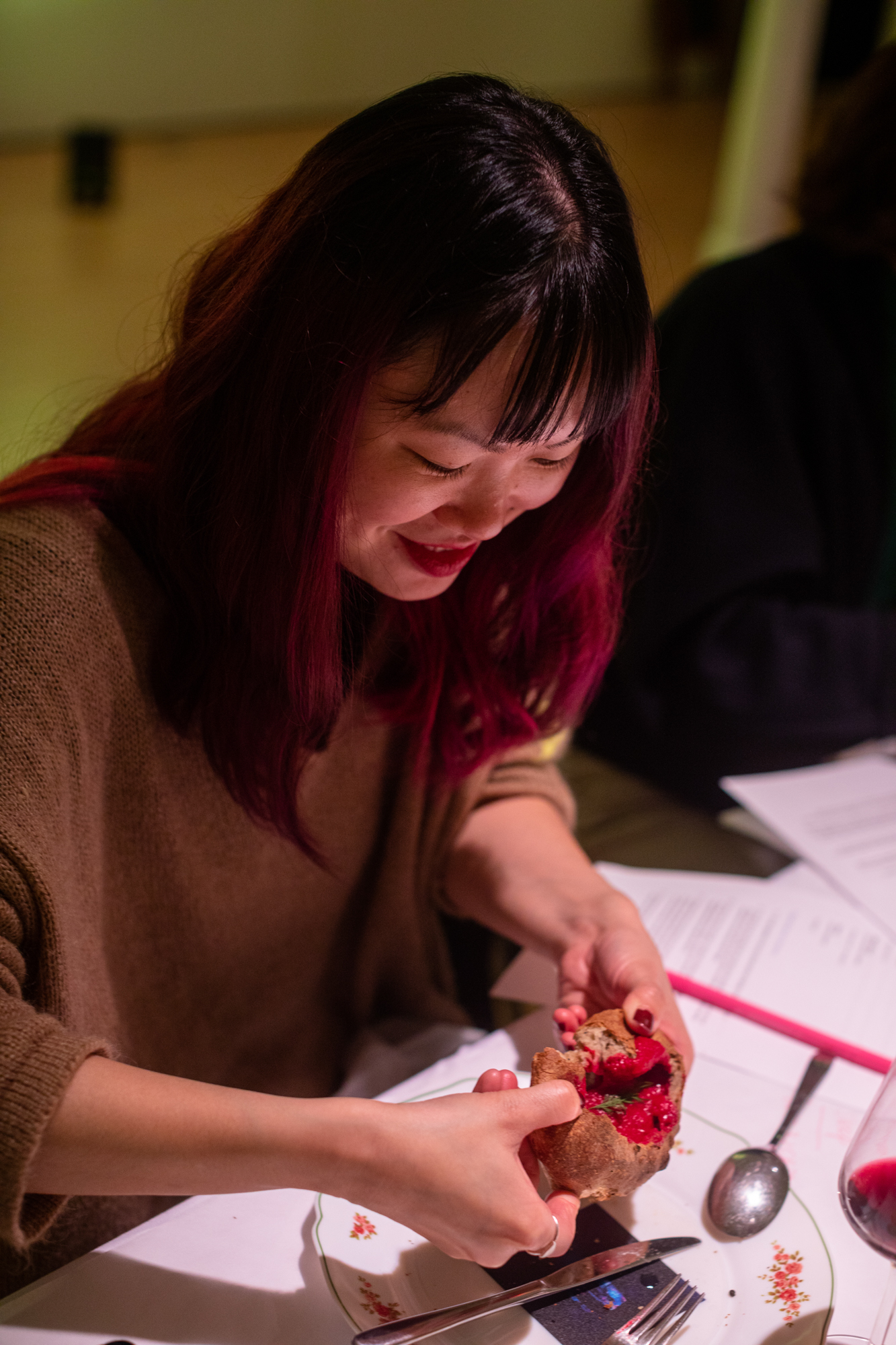

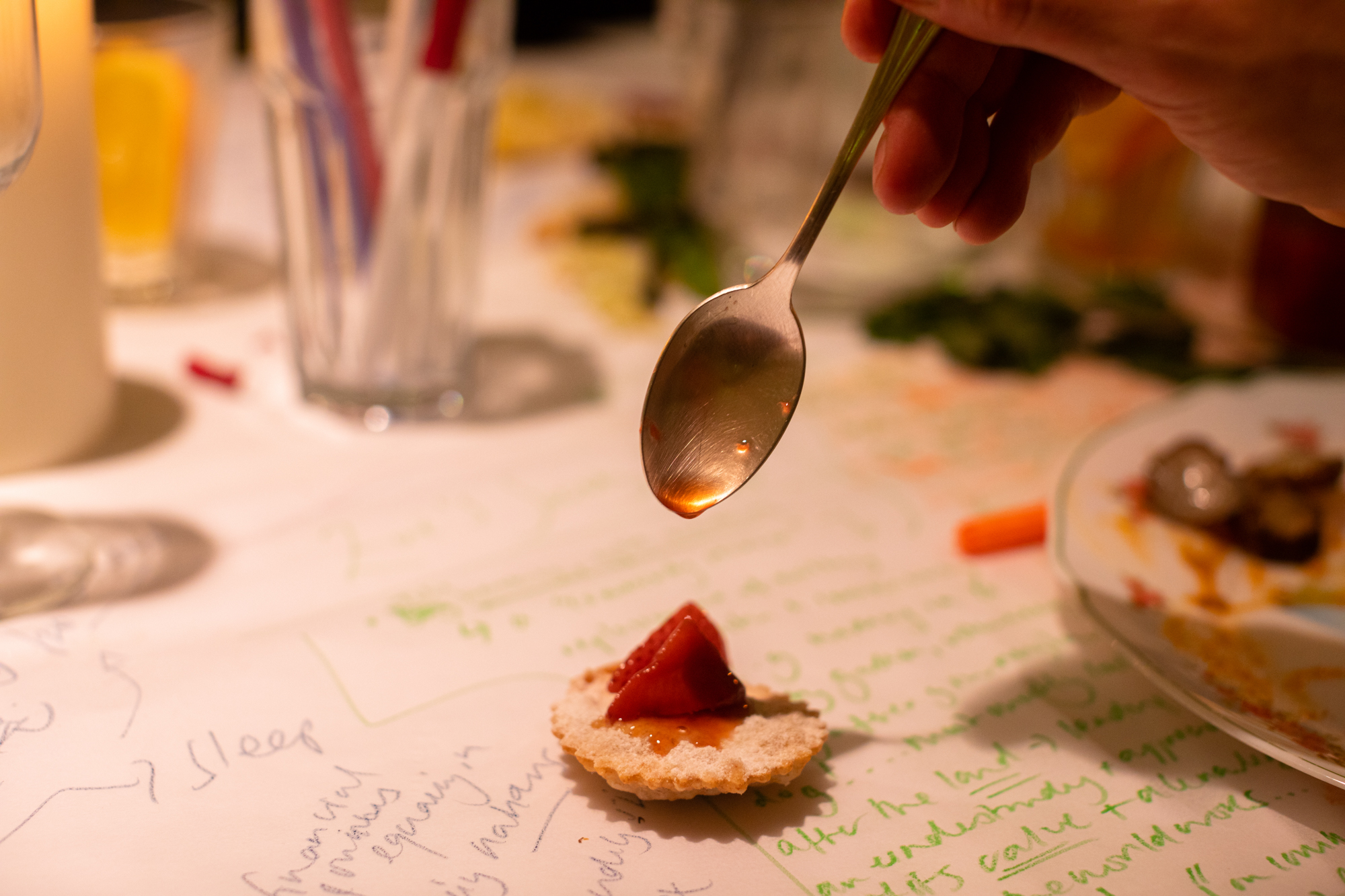






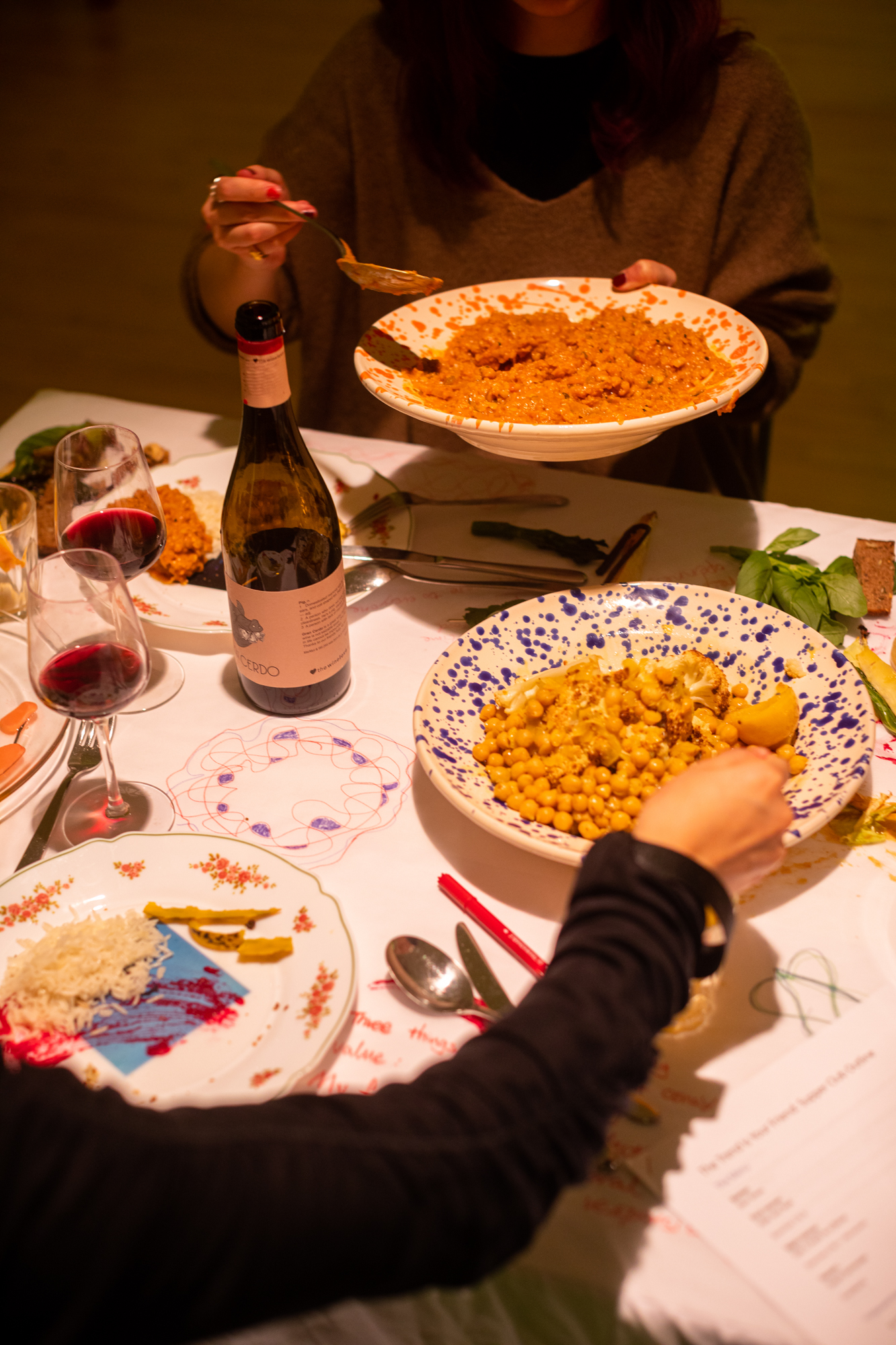
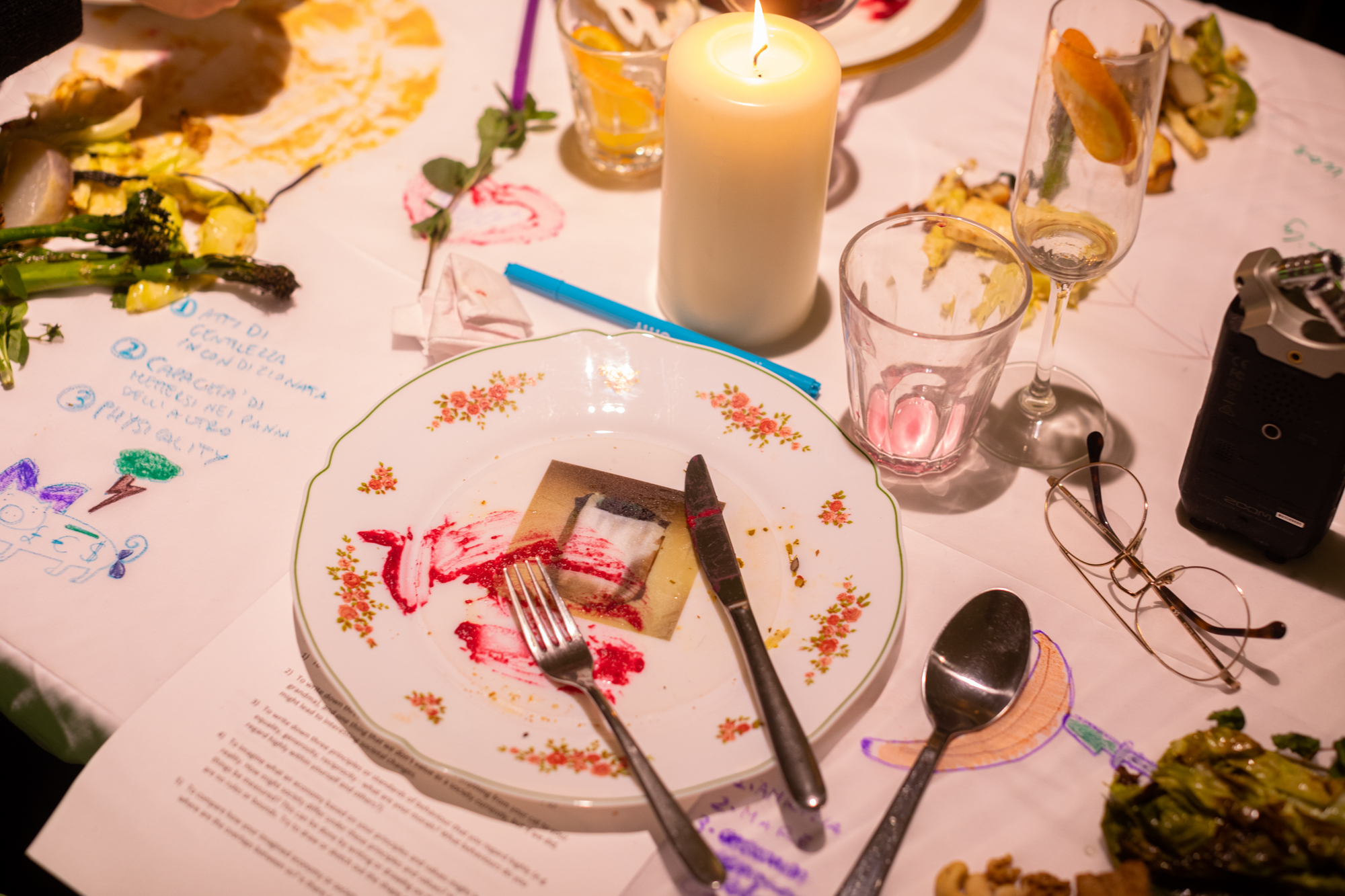




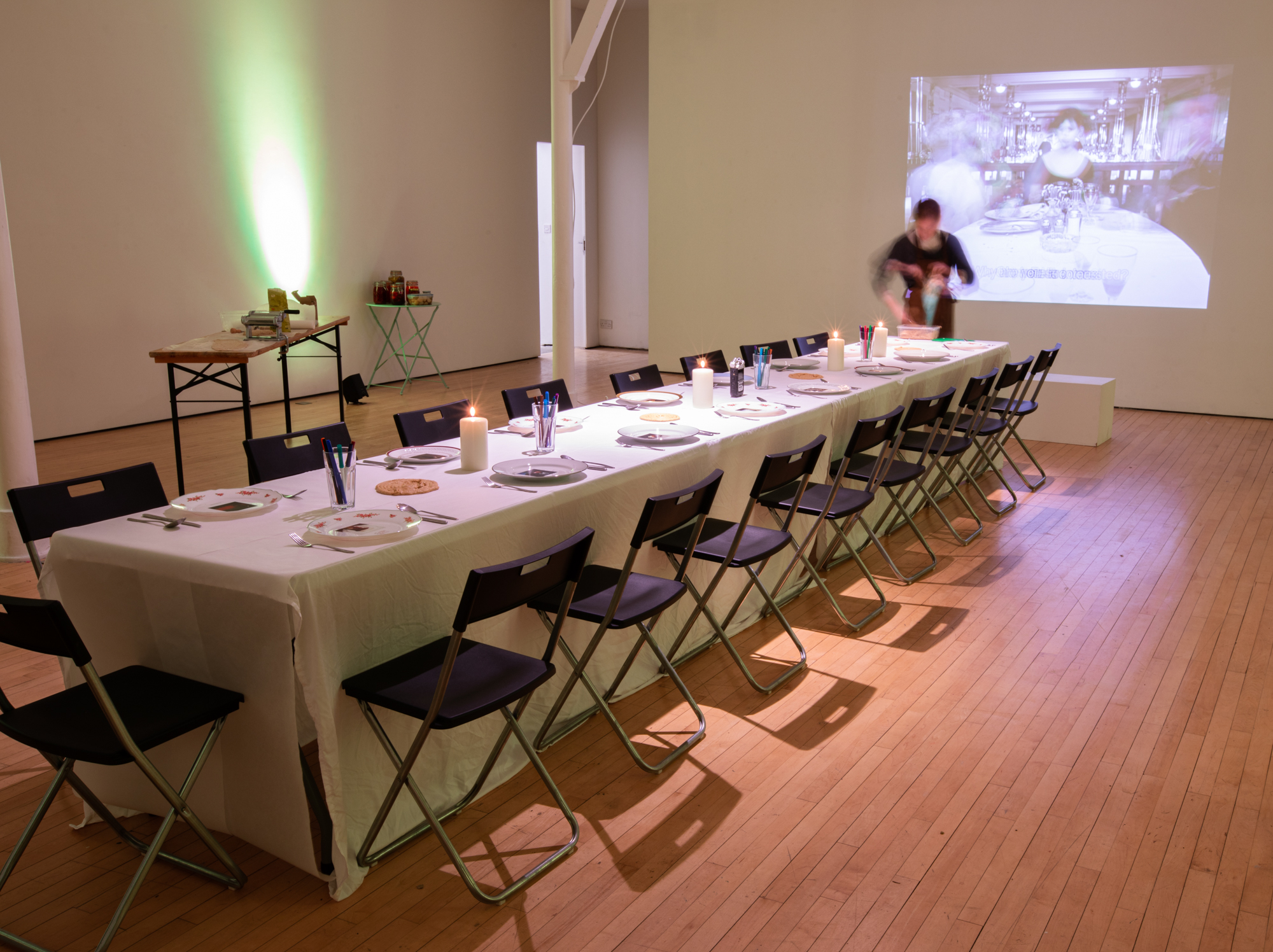
A further note on the plates:
These images have been produced by a Generative adversarial network. (GANs) are algorithmic architectures that use two neural networks, (a generator and a discriminator) pitting one against the other in order to generate new, synthetic instances of data that can pass as real. They are used widely in image recognition, generation and are the algorithms used in the creation of “deep fakes”. I have created these images using a text-to-image GAN. Through this process, I am able to generate images from words.
I have been feeding this particular GAN the names of various stock-market patterns used by traders in order to predict future trends in the financial market, as well as phrases taken from various internet forums for day traders (amateur home traders) on how to become profitable on the stock market. The GAN then produces an image, which it thinks, accurately represents these words. The patterns and phrases are printed underneath each image, with an aim to create a satirical and fabricated visual encyclopaedia of trading techniques and patterns.
The images created are based on a database of images taken at random from the internet, from which the algorithm is trained. These images are therefore fabrications of reality, based on real images, that the algorithm is attempting to present as real.
There are some interesting parallels between the way that this algorithm works, and the way in which value is apportioned to stocks on the stock market – both involve a certain amount of fiction and fabrication, and have limited relation to tangible reality.